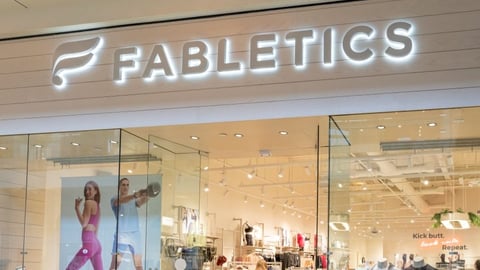Levi’s Works Smarter With Automation Bots, Shrinks Manual Workload
Levi’s is tackling workforce inefficiencies, slashing manual hours by tapping robotic process automation (RPA) capabilities. These bots take burdensome and labor-intensive tasks off retail and CG employees’ plates so they can focus on analytics and judgment-based work.
A year into Levi Strauss & Co.'s first bot deployments — two proof-of-concept bots going live for the first time in February 2021 — Levi’s is seeing reduced heavy lifts across its business operations.
Teams in New Zealand and Australia are now able to invoice wholesale partners in 20 seconds with an automated bot — a process that previously took five minutes per invoice from start to finish. This has saved a total of 500 hours of manual work, according to the company.
Sonia Vohra, wholesale customer experience lead at LS&Co, told Mark Cazares, for Levi's blog, Unzipped, that not having to block off days in a month to handle emailing statements freed her to focus on more important tasks like engaging with wholesale partners to deepen existing relationships.
Levi’s also leveraged bot technology to alleviate stress for merchandise coordinators who were having to manually enter more than 4,000 product codes into the company’s store systems. One bot replaced the efforts of five people and saved nearly 750 hours, the company reported.
The company’s goal is to save 20,000 hours of manual work across the organization to improve efficiency and streamline operations. To achieve this, Levi’s has tapped an estimated 50 bots in 2022 alone.
[Related: Levi’s to Cut 15% of Corporate Workforce and Focus on Digital Transformation]
A bot that’s set to roll out this year will focus on automating and scaling the amount of purchase orders (POs) Levi’s finance organization can close, cutting down on back-and-forth emails between internal teams and vendors, and improving accuracy across budgeting and finances. Using these bots, Levi’s hopes to reconcile its purchase orders quarterly instead of annually, scale with growth spikes in purchase orders, and re-invest time in creative tasks and projects.
A Larger Focus on Digital Transformation
Levi’s emphasized its efforts go far beyond bots, developing an RPA Center of Excellence (COE) team to identify automation potential across its organization. This team will look to mimic employee workflows, leveraging sensors to gain an understanding of existing processes and pinpointing solutions for simplifying tasks.
“We’re ensuring teams across functions have the tools and services they need to work in a digital-first mindset,” Levi’s chief financial officer Harmit Singh told Cazares. “I’m extremely proud of the work our RPA team has accomplished. We are seeing not only an immediate reduction in operational costs, but also increased employee satisfaction as teams can focus on higher-value activities.”
“While RPA is common among tech and digital-native companies, it’s just beginning in the retail industry. It’s investments in services like RPA that keep us at the forefront of the industry,” he added.
As companies across the retail and consumer goods space look to streamline and cut on inefficient costs and tasks, will this technology make a more prominent appearance in the years to come? According to Gartner, some are predicting that 90% of businesses will incorporate RPA tech by 2022.
This article first appeared on RIS News.





